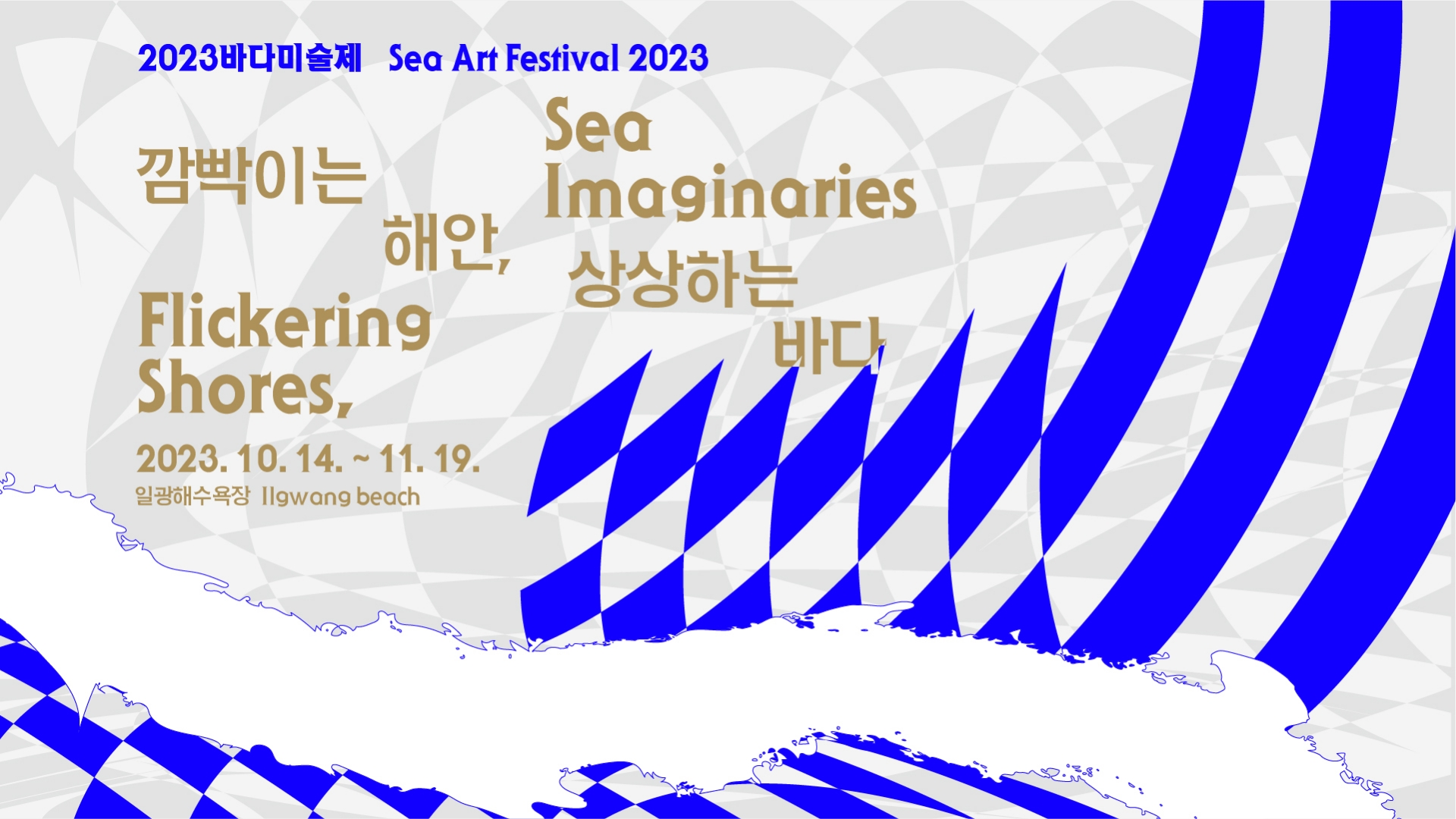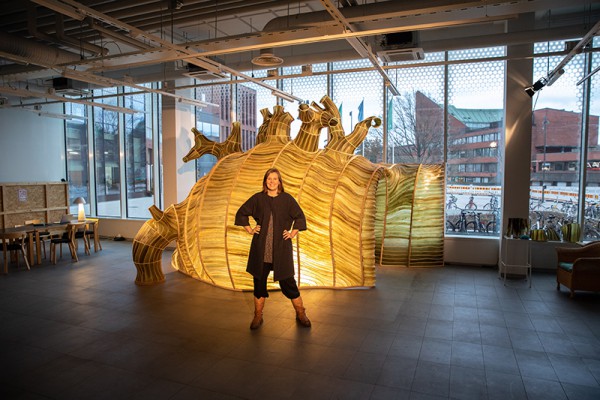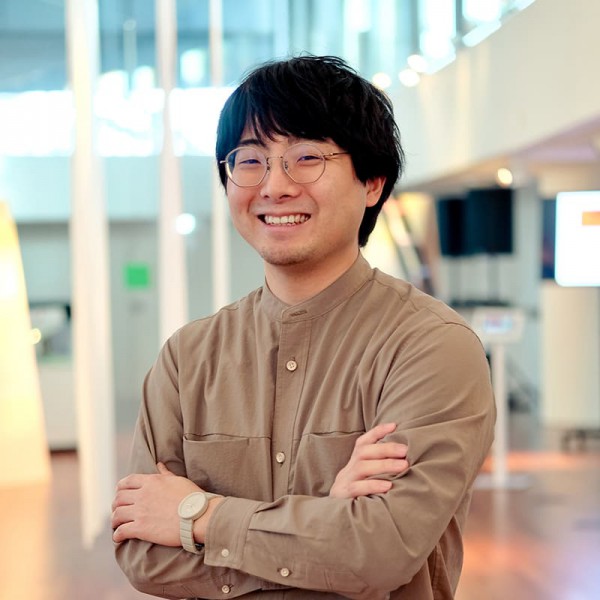


Flickering Shores, Sea Imaginaries, this year’s edition of the Sea Art Festival, is inviting us to rethink our relationship with the sea, referring to the beauty but at the same time, the fragility of our shores, and exploring alternative frameworks and visions for engaging with the ocean and marine environments.
The sea is deeply embedded in our lives and capitalist society, a vital source for our survival, but also a vast industry we exploit for food, medicines, energy, minerals, trading, travel and so on. But increased human activity, from extensive cruise tourism, shipping and overfishing to nuclear testing, pollution and deep-sea mining have been plaguing the sea, having a huge impact on marine ecosystems and habitats.

Instead of viewing the sea from the coast as a divided and abstract surface for moving around commodities, Flickering Shores, Sea Imaginaries reminds us that we are part of this body of water. This year's Sea Art Festival aims to explore new relationships with the sea and its ecologies, enabling spaces for cooperation, collective visions and synergies as a call to resistance and restoration.

Félix Blume is a sound artist and engineer using sound as a basic material in sound pieces, videos, actions, and installations. His work is focused on listening and inviting viewers to a different perception of their surroundings. His process is often collaborative, working with communities and using public space as the context within which he explores and presents his works. Blume has participated in international festivals and exhibitions such as Thailand Biennale, Tsonami Arte Sonoro, CTM Festival, Berlin International Film Festival, International Film Festival Rotterdam, LOOP Barcelona, The Belluard Bollwerk, and Sonic Acts.
VIEW MORE 
Based in Busan, Yun Pil Nam has participated in eight solo exhibitions and more than 50 group exhibitions at leading art institutions in Korea. By moving from the flat surface to three dimensions, Yun strives to express a world of art that goes beyond the superficial boundaries of painting, which can bind the past, present, and future together. Since 2016, she has been particularly interested in installation art and has also participated in creating theater costumes and public art projects.
VIEW MORE 
Based in Karachi, Pakistan, Seema Nusrat finds her creative muse in the bustling energy of her urban metropolis. With a deep-rooted fascination for urban life and the interaction between existing and imposed urban landscapes, she seeks to understand the complex relationship between people and the environment around them. Nusrat embraces a collaborative work method involving artisans and technical experts from diverse backgrounds, enhancing the depth and richness of her artwork and imbuing it with layers of cultural significance and craftsmanship. Nusrat’s work invites contemplation, urging audiences to question the underlying essence of their urban surroundings and the lives pulsating within them.
VIEW MORE 
Jang Seungwook currently works as an animation director in Reims, France. Winner of prizes at several international festivals, including IndieJúnior – International Children’s and Youth Film Festival in Portugal, In The Palace International Short Film Festival in Bulgaria, ShorTS International Film Festival in Italy, and Digicon6 ASIA Korea Regional Awards in South Korea, he is also expanding his artistic horizons by working as a children’s book author and illustrator.
VIEW MORE 


What if we were able to transform immense quantities of plastic objects found on our shores into valuable material?
Traces of the Waves is a new art installation, which forms part of the artist’s ongoing Weaving the Ocean art project series. In this project series, artist Ari Bayuaji transforms plastic waste into textile art, often made in collaboration with artisans.
The site-specific installation, created for this year’s Sea Art Festival, and situated alongside the wooden pathway next to Ilgwang Beach, has been constructed using thousands of plastic threads unraveled from plastic ropes found on beaches and the coast in Bali (Indonesia), as well as found plastic objects gathered from shorelines in Busan (South Korea).
Colorful plastic ropes, which are used for fishing nets, are often found washed up on our coastlines across the world in large quantities. Many times, they are entangled with marine life such as corals, or wrapped around vegetation on the beaches and beyond. But apart from plastic ropes, every year, we produce and consume over 400 million tons of plastic. From these plastic objects, we consume and throw away, about at least 14 million tons end up in the ocean every year, being carried away across the waters. Many of these plastic objects end up along our shorelines and plastic makes up almost 80% of all marine debris, from sea surface waters to deep-sea sediments.
Traces of the Waves addresses pressing environmental and social issues such as the immense pollution of our oceans and its consequences, the destruction of marine life, and the loss of the coastlines’ natural beauty. Bayuaji - working in collaboration with communities and artisans - goes through a meticulous process of collecting little by little plastic ropes and other plastic objects found on the beach, washing these materials several times, and separating them until they are transformed into usable fine threads that can be woven into textiles or used in his art installations such as this one.
This long process becomes a collaborative, caring and conciliatory effort that transforms an insignificant and cheap plastic object that pollutes our waters, giving it a new life as a useful and valuable artistic material. A devastating and negative impact on the environment becomes a “positive” outcome, drawing on collectivity and common endeavor, while celebrating craftsmanship. At the same time, Bayuaji pays homage to his Indonesian culture and textile traditions, but also the importance and role of the sea, which is right to the center of Balinese culture, philosophy, spirituality and rituals.
As one walks through the Traces of the Waves path, colorful strands and tufts of plastic threads can evoke forms of marine creatures like jellyfish and corals or the feel of seaweed strands and sea grasses moving in the waters.
VIEW MORE 
Climate change can sometimes feel far away and distant in both space and time, but what does it take to pay attention?
THIS IS NOT A GOOD SIGN is an augmented reality (AR) poetry project and site-specific installation by J. R. Carpenter & Tomo Kihara. The web-based augmented reality component of the project uses AR to overlay the user’s surroundings with 3D-modeled signage posing questions about past and present climatic conditions. ‘Why is the sky so blue?’, ‘Has it always rained?’ These signs call attention to the small changes in the climate already occurring all around us, inviting playful responses.
THIS IS NOT A GOOD SIGN was originally commissioned by Now Play This, a festival of experimental play design, in 2021. New signs have since been created responding to the specific themes of exhibitions at the Digital Design Weekend at the Victoria & Albert Museum in London, and the Everything Will be Fine exhibition in Berlin. ‘Time rivers under us.’, ‘It’s fine.’
For the Sea Art Festival, Carpenter & Kihara have created five new physical signs, with texts in Korean and English, which respond directly to the environmental conditions of Ilgwang Beach. Together, these signs form a poem:
sea rises early.
air falls heavily.
here wind lives.
swift ground shifts.
salt seeps into our dreams.
Experience these signs in person on Ilgwang Beach, or through the web-based AR app (https://not-a-good-sign.com/) anywhere in the world.
VIEW MORE 
Would you adapt your body to “serve” marine ecosystems and keep aquatic organisms healthy?
How to Become Wholesome investigates how bodily waste, in the broadest sense (tears, sweat, and urine), may contribute towards the wellbeing of aquatic organisms.
Extending from Kasia’s renowned installation How to Make an Ocean, where the artist collected and analyzed the chemical composition of human tears in order to feed tiny marine ecosystems, this work poses a series of questions such as: How to care for one's own body so that it becomes the most nutritious for a marine ecosystem? What tools are needed to harvest those nutrients from the human body? How do we test harvested substances for their suitability? What are the aesthetics of this process and of developing connections between the human body and the ocean?
The ongoing research behind this project is presented in a series of records and tools. Diet diaries and records of the chemical composition of Molga’s bodily secretion (Records of Transforming into Resource); a series of sketches of tools for helping to harvest nourishment from bodily waste (Tools for Harvesting Nourishment); and invented for purpose lab instruments.
Most importantly, at the heart of the current edition of this installation, are 3 to 4 interconnected water tanks. In these tanks, water made out of various bodily sources mixes with seawater, influencing the growth and nourishing the development of specially selected aquatic plants.
How to Become Wholesome draws a parallel between the wellbeing and survival of the human body with that of non-human species and reminds us that we are very much part of nature and the ocean, not a separate entity.
VIEW MORE 
What would the sea tell us if we could listen to her?
Rumors from the sea(originally produced in Thailand in 2018) is a sound installation in the middle of the bay of Ilgwang Beach. A bamboo-flutes orchestra played by the water is performing unique concerts 24 hours a day, depending on the tide, the direction, tempo and force of the waves. As a potential listener, you are invited to define the beginning and the end of the music piece played for you, to encourage a unique listening experience.
In every coastal zone and culture of the globe the sea has been a means of livelihood, from fishing weirs to contemporary fishing industry, maritime transport or tourism. The ocean is associated both to resource exploitation and a place to find comfort and relief. Within ever changing times, the human relationship to the sea is becoming a challenge in order to preserve our ways of living. In some places, an adaptation strategy for sea-level rise is the construction of flood-barriers as levees, dikes and seawalls.
Rumors from the sea transforms bamboo seawalls from being barriers into a threshold for listening. This temporary sound installation offers a very special place to gather in public open space for contemplating while listening to the sea and to the environment. It creates a space for human dialogue with nature. The extended sounds of the sea invite us to understand listening beyond the sonorous realm, as a practice of taking care, looking after and paying attention to ourselves, our natural surroundings and others.
The sound installation consists of hundreds of bamboo poles with a bamboo flute at their top. At the bottom of the bamboo, a hole lets the water come in and out. Each wave comes inside the tube, pushing the column of air until the flute is played by the sea.
https://felixblume.com/rumorsfromthesea
VIEW MORE 
Eunhae Jung and Zune Lee have collaborated on this installation creating mandala patterns from small and micro-ocean plastics generating visualizations of the earth’s frequency.
The plastic fragments have been collected from Hamden beach on Jeju island, in five years of activity collecting ocean plastics with volunteers and members of ECOOROT, an eco-art organization founded by Eunhae Jung. The mandala patterns here are generated using the Schumann Resonance - a series of resonating electromagnetic waves, driven by lightning activity, also known as the Earth’s “heartbeat” or “hum”.
Thunderstorms roll over Earth producing about 50 flashes of lightning per second and creating electromagnetic waves captured between the Earth’s surface and the ionosphere. Some of these waves combine to create a repeating atmospheric heartbeat or the Schumann resonance, an extremely low frequency at an average of 7.83 Hz.
Scientists have discovered that variations in the resonances correspond to changes in the seasons, solar activity, or activity in Earth's magnetic environment and other Earth-bound phenomena. There are theories that the earth’s vibrations are rising which can cause us anxiety, and although there is not hard scientific evidence for this, this theory emphasizes that we are most calm when our brain waves overlaps with the earth’s vibration, so maybe, the Schumann Resonance is a reminder of our connection and close relationship with the Earth.
Eunhae, since her childhood, wondered what this ever-present low sound was, which she was able to hear when everything else was quiet, but recently realized that many people can’t hear it.
Eunhae and the ECOOROT participants kneeling on the sand, stroking it with repetitive moves collecting microplastics while hearing the ocean sounds in the background, become part of a visceral experience that feels like a ritual or prayer. In the mother’s womb, the sound was experienced through tactile receptors. Sound was the touch.
The inspiration of Plastic Mandala came from the Tibetan Buddhist ceremony, where monks create a beautiful and colorful sand mandala for days to weeks, and when it’s complete, they dismantle it. Then they carry the sand, blessed and now blessing itself, and pour it into a nearby stream of water so that it will be flown into the ocean and to all living beings connected through the one ocean that connects us all.
The artwork expresses a sense of despair facing our plastic culture and the wish to bless the ocean by taking plastic out of the ocean. The artwork is complete when it is dismantled. It will not be turned into something new, useful, or permanent.
You can watch a video from a Plastic Mandala made by ECOOROT participants here:
https://www.youtube.com/watch?v=kjd1t9OWC2I&t=302s
VIEW MORE 

포레스트 커리큘럼은 남아시아와 동남아시아를 잇는 삼림지대 조미아의 자연문화를 통한 인류세 비평을 주로 연구합니다. 작품 유랑하는 베스티아리는 이 연구의 일환으로, 비인간적 존재들이 근대 국민국가에 내재된 계급적이고 세습적인 폭력과 그에 따른 잔재들에 어떻게 대항해왔는지를 보여주는 작품입니다. 좌중을 압도하는 듯한 거대한 깃발들은 위태롭고도 불안하게 스스로를 지탱하고 있는 듯 보입니다. 깃발에는 벤조인이나 아편부터 동아시아 신화에 등장하는 동물들까지 비인간 존재들을 상징하는 대상들이 그려져 있습니다. 각 깃발들은 비인간적 존재들의 대표자로서 모두가 한데 결합되어 아상블라주 그 자체를 표상합니다. 또한 깃발들과 함께 설치된 사운드 작품은 방콕과 파주에서 채집된 고음역대의 풀벌레 소리, 인도네시아의 경주용 비둘기들의 소리, 지방정부 선거를 앞두고 재정 부패를 유지하기 위한 수단으로 쓰이는 불필요한 공사에서 발생하는 소음, 그리고 위의 소리들을 찾아가는데 사용된 질문들과 조건들을 읽어 내려가는 내레이션으로 이루어져 있습니다.




